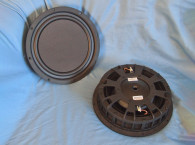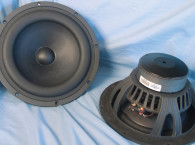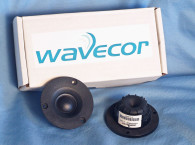Usually we meet Wavecor at the CES show, where the company has a suite and shows new products first-hand. But with the busy schedule at the Las Vegas, NV show, there's never enough time to discuss products in detail. In Munich, Wavecor has a nice booth and we can eventually see the new products in better light, compared to the dark suites of the Venetian... Also, they always kindly agree to hand out copies of Voice Coil, so I tend to get back often for refills.

As usual, we caught up with Allan Isaksen, General Manager and Chairman of Wavecor, which is not only an authority on speakers, but he is always kind enough to patiently explain what I need to know. After all, he was the former General Manager for DST Loudspeakers, and prior to that, he was engineering manager and director of sales & engineering for Vifa, Videbæk højttalerfabrik from 1983 to 2000 in Denmark, where he started his career. In 1999, Isaksen relocated from Denmark to the GuangDong Province of China, where he established the Chinese production base for Vifa/Scan-Speak, Vifa Loudspeakers (PanYu) Ltd., which subsequently merged into Danish Sound Technology (DST), later acquired by Tymphany. In 2005, he founded Wavecor, Ltd., and was later joined by his former Vifa/DST colleague Per Madsen, who is now Director of Technology at Wavecor. Together, Isaksen and Madsen have designed many of the famous drivers at Vifa/Scan-Speak.
Wavecor produces all its drivers in China, but the company's heritage is heavily routed in the best Danish loudspeaker tradition, and it's not surprising that Wavecor products power so many important consumer audio and high-end brands in Europe and all over the world. In that tradition, Wavecor likes to promote its products for how they sound, instead on how they measure - even if, as attested over the years by Vance Dickason in Voice Coil's Test Bench, they usually measure and sound very good. In the company's "manifesto" they state: "We optimize each and every parameter. However, at the end, our ears will make the final decisions. If we have to choose between two design directions, where one for instance linearizes the frequency response, and the other improves the sound judged by our ears, we will always pick the choice that makes the better sound." And that's probably why Wavecor drivers are frequently praised for being natural sounding and transparent.
Over the years, I have heard some of those companies that openly reveal they work with Wavecor, praising the brand's drivers. But one thing that intrigued me, is that, even though the company has a rather extensive catalog with tweeters, full-range drivers, midrange units, woofers, subwoofers, and even passive radiators, usually the loudspeaker companies brag about the fact that all their drivers are "completely custom made for them" by Wavecor.
When I visited Wavecor this year at the High End show, I was prepared to jump on the extensive range of tweeters and full-range units on display, but couldn't help noticing that there was an unusual number of large-sized drivers, and that the products standing out in the front where all low-frequency units... But extremely shallow for woofers. At least two of them.
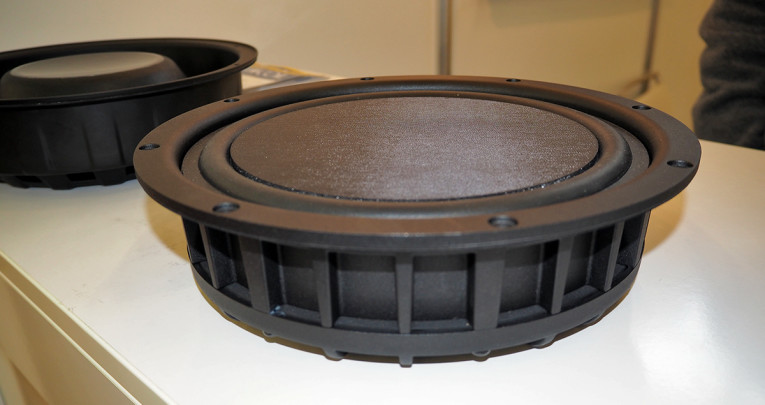
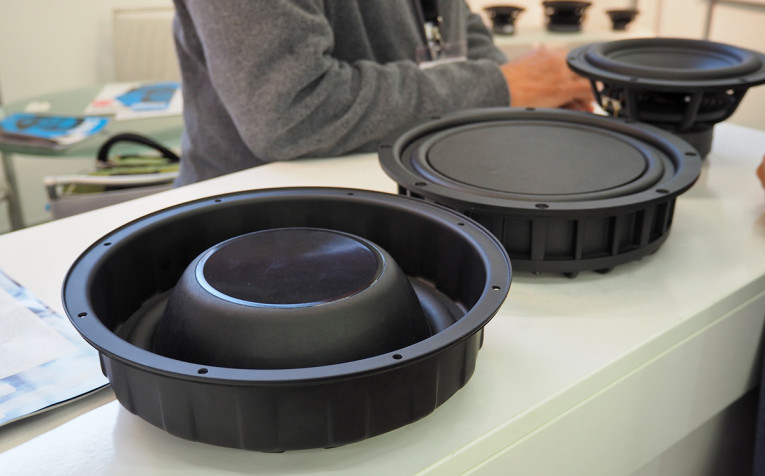
I asked Isaksen about those, and he explain they were two new 11" (27 cm) high-performance, low-profile subwoofers, the first of which, the SW280WA01 uses an innovative design with a dual rubber surround, no-spider suspension and a flat sandwich cone made of glass fiber/PMI foam. "Recommended for high-end audio applications, where build-in depth is limited, typically for high-performance in-wall systems," Isaksen explained. In the June 2019 edition of Voice Coil, the SW280WA01 was the focus of a Test Bench. As Dickason characterized, "the SW280WA01 represents some interesting driver technology that has application in small narrow spaces. The SW280WA01 has a unique and interesting feature set that starts with an extremely shallow 76 mm (3") depth proprietary eight-spoke vented cast-aluminum frame."
The innovative dual-cone design is the key to mounting the motor structure inside the frame, which uses its "balanced drive" motor configuration, with the magnet mounted "inside" the cone, all mounted on a rigid die cast aluminum chassis. The result is an impressive low profile woofer that offers extremely low mechanical losses and allows for great performance between 20 to 200 Hz, responding all the way to 400 Hz, with a continuous power handling of 200 W.
Side by side with the SW280WA01 - which was my initial focus of attention - was another driver, referenced as the SW280WA03. Like the other one, my immediate thinking was that this could be a very large passive radiator like I had seen from Wavecor, but Allan Isaksen was quick to indicate that it wasn't. In fact, like the reference number indicated, it is a very similar unit to the previous shallow woofer, just that it uses a 10" inverted paper cone and a basket with no opening from the front, because the venting and radiation is from the back. Like the SW280WA01, the SW280WA03 uses a balanced drive motor and its features are overall very similar.
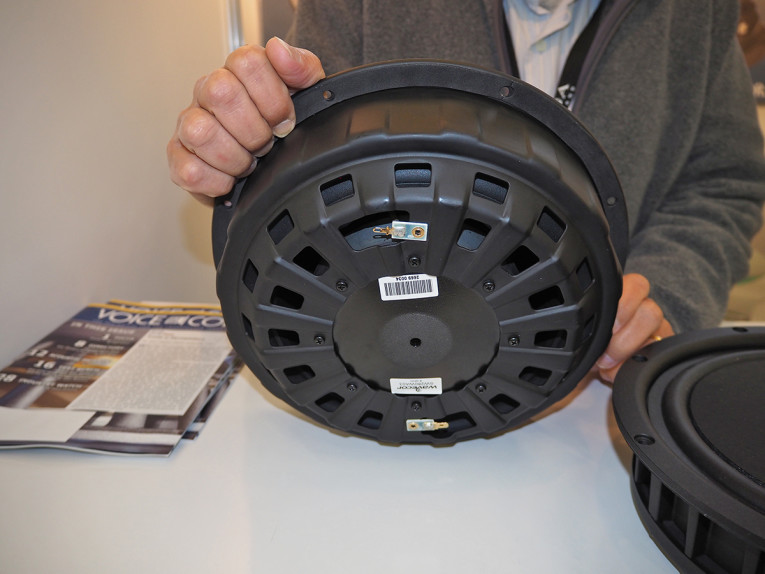
Really thin, and designed with in-wall installations in mind, this driver provides a hi-fi level solution for custom residential or home theater setups. "These are the first ones in a range," Isaksen explained. "Many customers were asking for a shallow design, and we had to figure out how to do that, and this was one way. We always look at existing patents, and to find a way around that, these drivers are just two ways of achieving the same thing."
"We worked on both projects at the same time, and it turned out that both work, so the project resulted in two products. The SW280WA01 was born to be in a die-cast frame, and that was actually the first one we started. Both are 10" and use the same magnet. But the SW280WA01 is spider-less and uses two surrounds." As he revealed, maybe there will be an 8" follow-up but no model larger than 10". Essentially, Wavecor will monitor how the market reaction will be before deciding to go any further, and the High End show was an opportunity to get some feedback.
While the SW280WA01 uses glass fiber, that's only a thin layer. The real structure is foam. "The glass fiber layer provides additional stiffness but it's mainly for cosmetic purposes, looking much nicer than the foam. Also, there's a hole for the voice coil fitting, so although there is foam on top of the voice coil, the glass fiber provides a better cosmetic look," Isaksen added.
On both the SW280WA01 and the SW280WA03, the voice coil is 39 mm, with copper wire on a glass fiber former and the intended frequency response should cover 20 Hz to 200 Hz with a resonance frequency (fs) of 26 Hz. Currently, the SW280WA01 is in production, available at resellers like Parts Express (for the US), and there are already at least two companies with finished products using it. As for the SW280WA03, Wavecor is ready to take orders and units are sampling now.
Renowned in the high-end space, Wavecor also seems to be exploring the installation and segments of professional audio. I asked Allan Isaksen about it. "We are focused on the high-end and consumer audio segments, but we continuously monitor the installation/residential markets. We have this 10" woofer that is directed more toward the installation segment and even PA applications, and we have quite a lot of small full range speakers that are not really for hi-fi, they are more for small, personal audio products, and they are actually doing quite OK. We try not to seat on only one segment of the market," he explained.

And keeping up with the low-frequency topic, Isaksen highlighted two other new subwoofers for us. First, the SW275BD02, a high excursion, high output, double-spider, 10.75" mica/paper composite cone subwoofer (8 Ohm) with a large motor and 2.5" (65 mm) voice coil. This is the highest performing Wavecor subwoofer in the catalog. Officially introduced in 2018, there are already some finished products in the market using it. The SW275BD01, the 4 Ohm version of this subwoofer was characterized in Voice Coil, October 2018.
Again using a Balanced Drive motor for optimal drive force symmetry, resulting in largely reduced even order harmonic distortion, the big NBR surround is one of the SW275BD02 distinctive features. FEA optimized for improved suspension symmetry, it features very low distortion from below 20 Hz and its vented center pole with dual flares, and rigid die cast aluminum chassis offer extensive venting for lower air flow speed, reducing audible distortion.
Since 2018, Wavecor also launched the WF182CUX1 paper cone mid/woofer, which is not something that can be found on the brand's website, but we found it at the company's booth in Munich. This is because it is a product that is made on special request from Wavecor's German distributor. Nevertheless, the company can make it available if any manufacturer asks for it. It is basically an existing catalog woofer, where the dust cap was replaced by a phase plug, and the result is getting an enthusiastic response in the high-end market.
These drivers are nice examples of Wavecor's ability to develop both completely new solutions and quickly respond to a market request with adapted products from its catalog. But as Allan Isaksen explains, "for a company like ours, it's always a compromise because we get a lot of customer requirements, so it's difficult to balance the time spent on our own developments, versus what you do for one customer. This is a difficult one, because once you have a customer asking for something, you have a relatively high degree of certainty for business, but if you are not careful, your own development suffers.
"And it is very typical that clients completely specify the product they want. An example is Audio Physic. We do all their drivers and none of them are standard. They are not even close to being standard. And around this show, we have quite a good quantity of drivers. Some of our customers will explain to you proudly that they use Wavecor, others don't talk about it. Others even say they do their own drivers... But it doesn't matter, as long as it works for them."
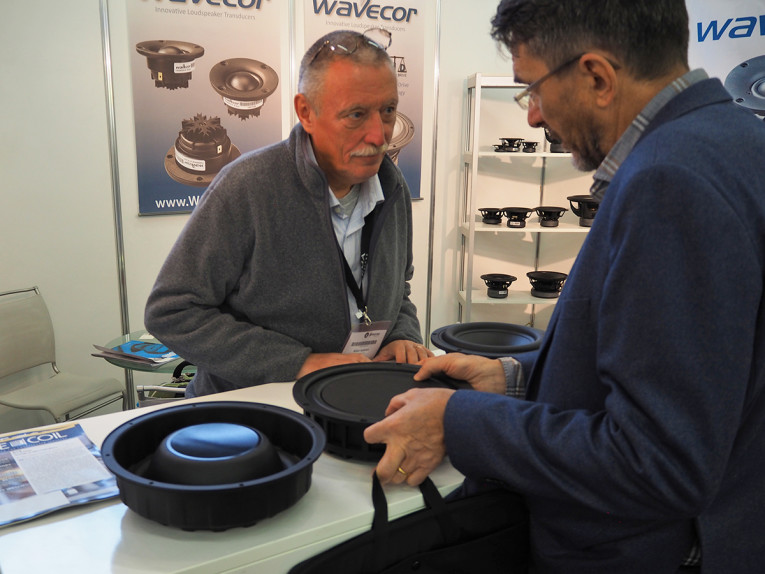
I couldn't resist using the opportunity to chat a bit with Allan Isaksen about the dilemma that many audio manufacturers go through, when their ambitions sometimes are bigger than their actual engineering expertise (and budget). Something that is not so common in high-end, but we can see very often among consumer audio companies and especially startups, attending CES.
How many times do you risk specifying the exact drivers you intend to use on a speaker design - and risk ending up with a product that is more expensive because you only committed to certain quantities, you paid for some specific tooling, and in the end it's not what you thought it would be - but hey, that's your fault - or you basically grab a standard product from a driver manufacturer catalog and you design the speaker around it, keeping your resources for other aspects, like the cabinet design?
Isaksen was amused by this description and commented, "If a manufacturer knows exactly what they want, which by the way is not always the case, I would say that for us it's not that hard to do. I don't see any difficulty. There might be some materials, cosmetic things that are a little bit harder, but technically, if you can tell us what you want, it should be easy. Once the finally engineering samples are approved, that's what comes out of production. And as with specs, it's the same with the price. Once we fix the price, it's fixed."




